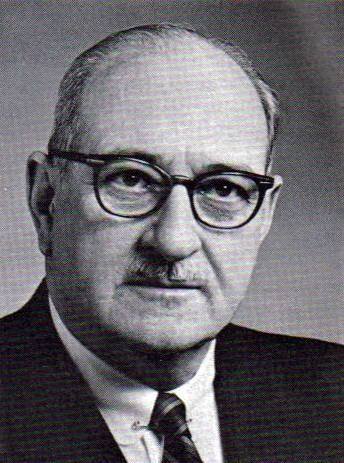Name Laurie Cookingham | ||
 | ||
Died July 22, 1992, Kansas City, Missouri, United States | ||
Laurie Perry Cookingham, more commonly known as L.P. Cookingham or L. Perry Cookingham, (October 23, 1896 – July 22, 1992) was a noted public administrator in the United States having served as City Manager of Kansas City, Missouri for 19 years.
Contents

Early life
Cookingham was born in Chicago, Illinois, and grew up in Danville, Illinois. He served in the U.S. Army during World War I and received a civil engineering degree from the Detroit Institute of Technology. He worked in the public-works department of Flint, Michigan, where he met his wife Harriette West.
In 1926, he was the first city manager of Clawson, Michigan. In 1931, he was named city manager of Plymouth, Michigan and subsequently became the director of the work division of the Federal Emergency Relief Association in Wayne County, Michigan.
Cookingham served as the first City Manager of Saginaw, Michigan, after that city adopted a new city charter providing for the council-manager form of government in 1935.[1] He served in this post from January 6, 1936 until May 14, 1940. During this time he was also president of the International City/County Management Association.
City Manager of Kansas City
Kansas City had switched to the city manager form of government in the 1926, ostensibly to improve efficiency. However, big city boss Tom Pendergast was to install a puppet city manager as the first city manager, in the form of Henry F. McElroy.
The Pendergast/McElroy combine was to usher in a glory era in which much of the city infrastructure, including Kansas City City Hall, Municipal Auditorium (Kansas City), Nelson Art Gallery, was built and Kansas City Jazz was to thrive during a period of lax to non-existent enforcement of liquor laws. However, the era was also marked by patronage jobs and no-bid contracts, all covered up by McElroy's "country bookkeeping." The era ended in 1940 with Pendergast pleading guilty to income tax evasion. McElroy had died shortly after leaving office in 1939.
Following the city election of 1940, a new city council hired Cookingham to reform Kansas City’s administration. He took office on June 10, 1940.
Cookingham entered office with the city $20 million in debt. Within six months, he had trimmed the payroll by 2,000 and within a year and a half he had eliminated the city's debt.
He was to oversee a period when Kansas City through annexations more than doubled in area from 60 to 130 square miles (340 km2) —- mostly north of the Missouri River.
The Great Flood of 1951 destroyed much of Kansas City's industrial base —- devastating the Kansas City Stockyards and destroying major facilities belonging to the city's two home-based airlines -- Mid-Continent Airlines and TWA. Cookingham oversaw the construction of a brand new jet port north of the Missouri River, which would become Kansas City International Airport, including the construction of a city-owned overhaul base that was leased back to TWA to repair its worldwide fleet of planes. Cookingham Road, the main road into the airport, is named for him.
The freeway system in the Kansas City metropolitan area is credited in large part to Cookingham’s planning.
In 1959, the City Council forced Cookingham to resign. Within the next four years, Kansas City had nine city managers.
Post Kansas City
After leaving Kansas City, Cookingham was city manager of Fort Worth, Texas for four years. After which, he retired and returned to Kansas City where he administered the People to People Program and served as a consultant to Kansas City architect firm HNTB.
The University of Missouri–Kansas City conferred upon him the honorary degree Doctor of Humane Letters on May 12, 1979 [2] and later named the L.P. Cookingham Institute of Urban Affairs at the Henry W. Bloch School of Management, UMKC after him.
In 1986, the City of Saginaw invited Cookingham to participate in celebrations marking the 50th anniversary of the council-manager city charter in recognition of his contributions made to that city in which he was also highly regarded. During the occasion, a time capsule was buried near the entrance to Saginaw’s City Hall scheduled to be opened in 2036.
Cookingham died on July 22, 1992, in Kansas City, at the age of 95. He was buried at Forest Hill-Calvary Cemetery in Kansas City.[3]
